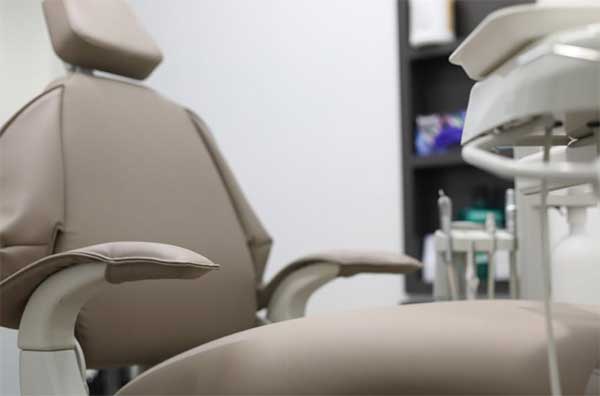It’s no secret that healthcare costs are on the rise. The Kaiser Family Foundation reports that the annual out-of-pocket costs for American families today have gone up by 230% in just the past decade. This is leaving many Americans struggling to find the right coverage for their family, not to mention it makes even the most basic of healthcare treatment complicated and frustrating.
Many people across the country are opting to skip their annual checkups and even just go without health insurance altogether because it’s too expensive. This is a catastrophe waiting to happen, yet it’s still a reality for many Americans. How can average Americans keep their out-of-pocket health care costs low so they’re able to get the treatment they need when they need it? Here are some real-world tips to make the most of your insurance.
Understand the Cost
What does paying out-of-pocket mean exactly? Health insurance sometimes feels like it’s designed to be confusing on purpose, and this keeps many people from looking closer at how much they’re actually paying for coverage.
Out-of-pocket costs mean how much you’ll be expected to pay for your treatment even with insurance. This includes things like copays, deductible, and coinsurance, as well as paying for treatment that isn’t covered in your insurance plan. It’s tricky to understand the ins and outs of this cost and just why it’s so expensive. That’s why you need to be vigilant to ensure you’re making the most out of your insurance plan.
Tip 1: Compare Prices
Thanks to ACA subsidies, health insurance is now a bit more affordable. That being said, there are still many Americans paying over 10% of their income each month on health insurance costs. It’s easy to overpay if you don’t know where to look for the best prices. If you’re receiving insurance through your company, look for resources like payment calculators that break down the cost by the service. This is the best way to make sense of what you really have to pay for treatment.
Remember that healthcare is a quality over quantity situation. Your health is the most important thing you have. If you know you’ll be needed extensive medical treatment, don’t opt for the lowest cost plan that will leave you paying even more to see specialists. The last thing you want to do is risk your health. Click here for more information about healthcare marketplaces to compare prices.
Tip 2: Don’t Be Afraid to Negotiate
Many Americans don’t realize that prices aren’t always written into concrete. By talking to your doctor and healthcare providers, you can often lower the price. Sometimes there is room for accommodation you didn’t even know about.
The best example of this in action is in the hospital emergency room. If you don’t speak up, you’re likely to be placed in a higher-cost private room which can result in a larger than life bill. On the other hand, if you’re upfront about wanting an affordable option, there are likely alternatives available. Many healthcare providers are willing to work with patients to negotiate a price, especially if the patient is able to pay in cash on the same day as treatment. Never be afraid to ask about any discounts or pricing options.
Tip 3: Be Persistent with Claims
Claim trouble is one of the biggest reasons for high out-of-pocket insurance costs. You’ve received medical treatment only to discover weeks or even months later that it’s been denied by your insurance provider. Now you’re on the line for an exorbitant bill. You have options, believe it or not.
First, remain calm and contact your healthcare provider first. Confirm with them that the claim was filed correctly. Sometimes there was a mistake in the filing process, and this leads to issues with your insurance. Always take down the person’s name who you spoke to, and keep track of itemized bills.
It’s frustrating to go back and forth with your insurance company, but be persistent. These insurance claims are not always final, and you can still appeal the denial. Remain polite and calm, but don’t give up.
Tip 4: Avoid the ER
While it’s not always possible to skip out on the emergency room, especially for life-threatening injuries, there are many times when you can wait to see a regular doctor. No matter your insurance coverage, emergency rooms always come with expensive out of pocket costs.
A more affordable option is an urgent care center or a same-day doctor’s appointment if it’s not the middle of the night. Many urgent care centers are open 24/7, and they can deal with things like deep cuts, broken bones, and illnesses without the exorbitant costs.
Tip 5: Consider Telemedicine
We live in a digital world. Now, it’s possible to talk to a doctor without even leaving the house. These types of telemedicine startups are not only more affordable than traditional healthcare providers, but they’re more convenient.
With DoctorOnDemand, you can receive a medical consultation over a video call and even receive some prescriptions. PillPack is becoming a virtual pharmacy where you can have your necessary prescriptions delivered for an affordable cost. Finally, Nurx is an easy way for women to talk to a doctor about birth control and sexual wellness, and they can even fill their birth control prescriptions directly through the app at a lower cost than a doctor’s visit.
Telemedicine is a great way to access your healthcare on the go, and lower costs for minor treatment and preventative care. In the future, there will continue to be more options for treating your health digitally.
Healthcare Shouldn’t Be Expensive
While there doesn’t seem to be a solution to high healthcare costs in this country any time soon, that doesn’t mean you should accept paying more for quality treatment. These tips above will combat rising out-of-pocket costs. A little bit of knowledge and persistence goes a long way, so arm yourself with these tools and take control of your health.











